No products in the cart.
Sale
Ezatiostat hydrochloride | CAS 286942-97-0 | GSTP1 Inhibitor for Hematopoietic Research | low price wholesale
Original price was: $36.00.$23.00Current price is: $23.00.
Ezatiostat hydrochloride (CAS 286942-97-0) is a selective, orally active GSTP1 inhibitor and tripeptide analog of glutathione, widely used in research on hematopoietic stimulation and myelodysplastic syndrome (MDS).
Description
Product Description
Ezatiostat hydrochloride, also known as TER199 or TLK199 hydrochloride, is a synthetic tripeptide analog of glutathione. Its primary biochemical action is the selective inhibition of glutathione S-transferase P1-1 (GSTP1), a key enzyme involved in cellular detoxification, apoptosis regulation, and redox homeostasis. By binding to the active site of GSTP1, Ezatiostat hydrochloride prevents the enzyme from conjugating glutathione to electrophilic substrates, which in turn leads to the activation of the c-Jun N-terminal kinase (JNK) signaling pathway. JNK activation promotes apoptosis in specific cell populations while simultaneously stimulating the proliferation of progenitor cells within the bone marrow, making it a molecule of interest in hematopoietic research and preclinical models of myelodysplastic syndrome (MDS).
In preclinical studies, Ezatiostat hydrochloride has demonstrated a unique dual effect on hematopoietic cell populations. Firstly, it promotes the proliferation and differentiation of erythroid and myeloid progenitor cells. Secondly, it enhances lymphocyte activation and expansion, improving the immune responsiveness of treated cell cultures. These properties make Ezatiostat hydrochloride a valuable tool for laboratories investigating bone marrow dysfunction, immune cell regulation, or redox-related enzymatic pathways.
The compound’s oral bioavailability and selective action on GSTP1 distinguish it from other tripeptide analogs, allowing for controlled in vitro and in vivo studies with minimal off-target effects. Its utility extends to combinational research where modulation of GSTP1 activity is used to sensitize cells to other chemotherapeutic or immunomodulatory agents. Due to its mechanism of action, Ezatiostat hydrochloride also serves as a model compound in studies exploring oxidative stress, apoptosis signaling, and enzymatic regulation in hematopoietic tissues.
Ezatiostat hydrochloride’s chemical stability, coupled with its reproducible biological effects, enables its use across a wide spectrum of experimental platforms, including primary cell cultures, hematopoietic stem cell assays, and preclinical animal models. Researchers frequently employ it to dissect the molecular pathways underlying GSTP1-dependent regulation of progenitor proliferation and stress response, facilitating a deeper understanding of MDS pathophysiology and potential therapeutic interventions.
The compound’s specificity for GSTP1 ensures that its effects are largely limited to targeted pathways, reducing confounding variables in experimental studies. This selectivity, combined with its ability to stimulate progenitor expansion, provides a robust system for evaluating new hematopoietic interventions or combination therapies aimed at restoring bone marrow function.
Ezatiostat hydrochloride also serves as a tool in drug discovery pipelines, especially in screening assays for compounds capable of synergizing with GSTP1 inhibition. It can be applied in high-throughput screening assays to identify molecules that enhance progenitor proliferation, modulate lymphocyte activity, or influence apoptotic signaling. Additionally, the compound’s pharmacokinetic properties in animal models allow researchers to explore oral dosing regimens, absorption kinetics, and systemic bioavailability relevant to translational studies.
Given its established role in stimulating hematopoietic progenitors and modulating immune cell function, Ezatiostat hydrochloride continues to be a compound of interest for research focused on MDS, bone marrow failure syndromes, and other conditions associated with impaired hematopoiesis. Its versatility, selectivity, and reproducible biological effects make it an indispensable reagent for laboratories dedicated to understanding GSTP1-mediated cellular processes and developing potential interventions in hematopoietic dysfunction.
Product Specifications
| Parameter | Specification |
|---|---|
| Product Name | Ezatiostat hydrochloride |
| CAS Number | 286942-97-0 |
| Synonyms | TER199, TLK199 hydrochloride |
| Molecular Formula | C14H22ClN3O4S |
| Molecular Weight | 349.86 g/mol |
| Purity | ≥99% |
| Appearance | White to off-white crystalline powder |
| Solubility | Soluble in DMSO, slightly soluble in water |
| Storage | -20°C, desiccated, protected from light |
| Applications | GSTP1 inhibition studies, hematopoietic progenitor proliferation, lymphocyte activation, MDS research |
Mechanism of Action
Ezatiostat hydrochloride exerts its pharmacological and biological effects primarily through selective inhibition of glutathione S-transferase P1-1 (GSTP1). GSTP1 is a cytosolic enzyme responsible for detoxifying electrophilic compounds by conjugating them to glutathione. Under normal physiological conditions, GSTP1 also regulates the c-Jun N-terminal kinase (JNK) signaling pathway by forming inhibitory complexes with JNK. Inhibition of GSTP1 by Ezatiostat hydrochloride disrupts this complex, leading to activation of JNK, which in turn induces apoptosis in certain cells and triggers signaling cascades that promote cell survival and proliferation in hematopoietic progenitors.
The activation of JNK signaling following GSTP1 inhibition plays a critical role in modulating hematopoietic cell fate. In bone marrow cultures, Ezatiostat hydrochloride enhances erythroid and myeloid progenitor proliferation, while simultaneously stimulating lymphocyte expansion. These effects are mediated through JNK-dependent transcription factors that regulate the expression of genes involved in cell cycle progression, differentiation, and apoptosis.
Ezatiostat hydrochloride’s selective inhibition of GSTP1 allows for the controlled activation of stress-response pathways without widespread cytotoxicity. By modulating the redox-sensitive signaling environment, the compound not only stimulates progenitor proliferation but also enhances the sensitivity of malignant or pre-malignant cells to apoptosis. This duality is particularly valuable in experimental models of myelodysplastic syndrome, where the balance between progenitor stimulation and aberrant cell apoptosis must be carefully studied.
Mechanistically, the tripeptide analog structure of Ezatiostat hydrochloride enables it to mimic glutathione’s interactions with GSTP1 while acting as a competitive inhibitor. Its oral bioavailability allows for convenient dosing in animal studies, facilitating long-term evaluation of GSTP1-dependent pathways. Researchers frequently employ the compound in combination with other modulators of oxidative stress or apoptotic signaling to dissect complex cellular responses in both normal and diseased hematopoietic systems.
The downstream effects of GSTP1 inhibition by Ezatiostat hydrochloride include modulation of cytokine secretion, enhanced progenitor proliferation, and improved immune cell function. These properties make it a versatile tool for in vitro assays, primary bone marrow culture studies, and preclinical disease modeling. Its ability to selectively target GSTP1 without affecting other glutathione S-transferase isoforms ensures that observed effects are primarily mediated through its intended molecular target, providing high fidelity in experimental designs.

Side Effects
In research contexts, Ezatiostat hydrochloride is generally well-tolerated at experimentally relevant concentrations. The compound’s selective inhibition of GSTP1 reduces off-target cytotoxicity; however, overstimulation of progenitor cells or excessive JNK activation may lead to apoptosis in certain sensitive cell populations if dosing is not carefully optimized. Common laboratory-observed effects may include transient alterations in redox balance, moderate changes in cytokine profiles, or variable lymphocyte activation depending on culture conditions.
Extended exposure in in vitro studies should be monitored for potential induction of oxidative stress due to prolonged GSTP1 inhibition. In preclinical animal studies, standard monitoring of hematopoietic parameters is recommended to evaluate both desired proliferation effects and any signs of cellular stress or lineage imbalance.
Ezatiostat hydrochloride does not have reported human therapeutic safety data in this context; all handling should follow institutional biosafety and chemical safety protocols. Researchers should utilize protective equipment and standard laboratory precautions to prevent exposure and ensure accurate experimental outcomes.
Keywords
Ezatiostat hydrochloride, TER199, TLK199 hydrochloride, GSTP1 inhibitor, tripeptide analog, hematopoietic progenitor proliferation, lymphocyte stimulation, MDS research, JNK activation, bone marrow research
Shipping Guarantee
All shipments are handled using validated cold-chain logistics to preserve peptide integrity. Each package is sealed in moisture-proof containers with secondary protective wrapping and continuous temperature monitoring. Products are shipped via express international couriers with full tracking and insurance coverage.
Trade Assurance
We ensure product authenticity, verified ≥99% purity, and compliance with analytical standards (HPLC, MS, and NMR). Each batch is supplied with a Certificate of Analysis (CoA). Our trade assurance policy guarantees replacement or refund for any deviation from listed specifications.
Payment Support
We provide flexible and secure global payment options to support international research transactions. Accepted payment methods include PayPal, major credit cards (Visa, MasterCard, American Express), telegraphic transfer (T/T), and cryptocurrencies (USDT, Bitcoin, Ethereum). All transactions are protected by industry-standard encryption and verified payment gateways to ensure confidentiality and fund security.
Disclaimer
All products listed are intended for laboratory research use only and not for human or veterinary use. They are not drugs, medical devices, or diagnostics and should not be administered to humans or animals. Researchers must handle all materials in accordance with institutional biosafety and chemical safety guidelines. The information provided is for scientific reference only and does not imply therapeutic efficacy, safety, or regulatory approval.
Additional information
| Weight | 0.8 kg |
|---|---|
| Dimensions | 65 × 28 × 65 cm |
What is Ezatiostat hydrochloride used for in research?
It is used as a selective GSTP1 inhibitor to study hematopoietic progenitor proliferation, lymphocyte stimulation, and redox-related cellular pathways.
What is the purity of Ezatiostat hydrochloride?
Purity is ≥99%.
Can Ezatiostat hydrochloride be used in vivo?
Yes, it has oral bioavailability and can be used in preclinical animal studies.
What are the synonyms for Ezatiostat hydrochloride?
TER199 and TLK199 hydrochloride.
How should Ezatiostat hydrochloride be stored?
Store at -20°C, protected from light and moisture.
What solvents are compatible with Ezatiostat hydrochloride?
It is soluble in DMSO and slightly soluble in water.
Does it affect lymphocytes?
Yes, it stimulates lymphocyte proliferation and activation.
Which enzyme does Ezatiostat hydrochloride inhibit?
Glutathione S-transferase P1-1 (GSTP1).
Is it safe for human administration?
No, it is for laboratory research use only.
How does Ezatiostat hydrochloride activate JNK?
By inhibiting GSTP1, which normally suppresses JNK, leading to activation of apoptosis and proliferation pathways in target cells.

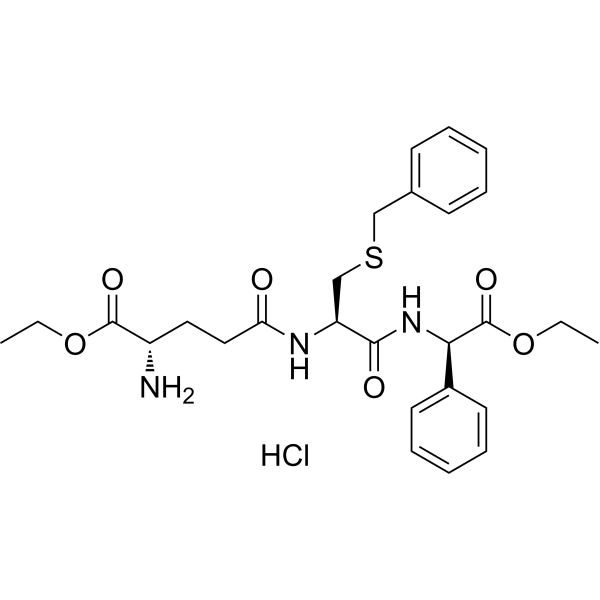

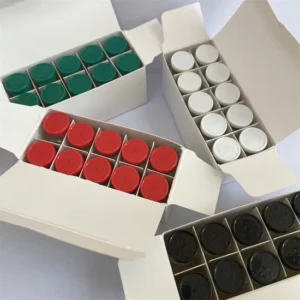


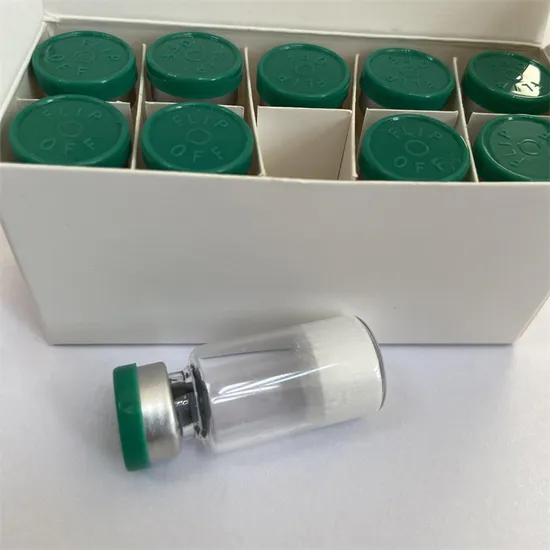
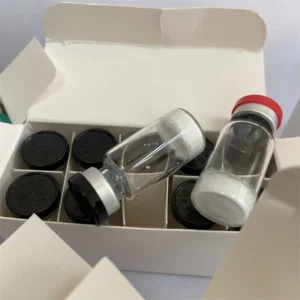
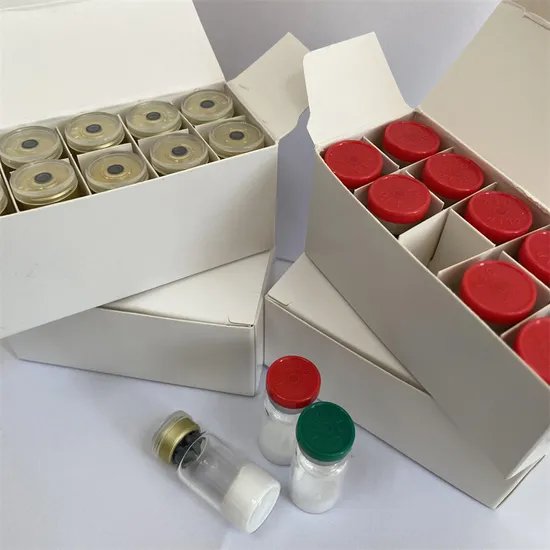
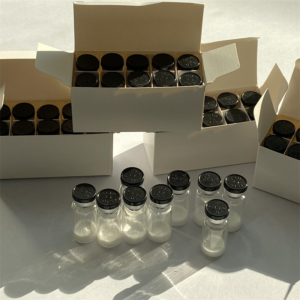
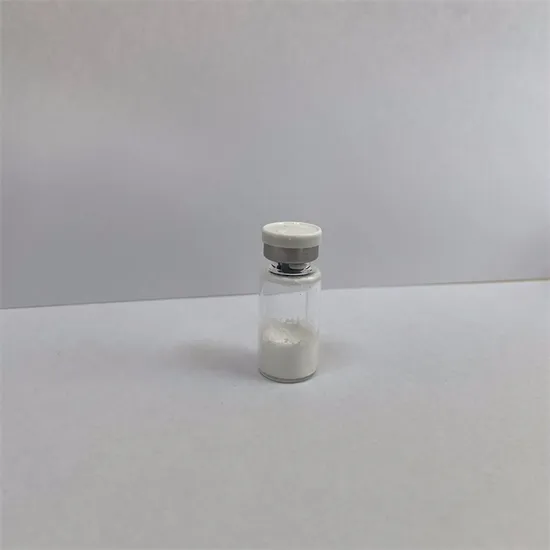
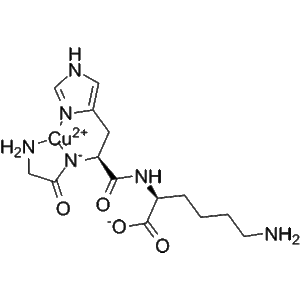
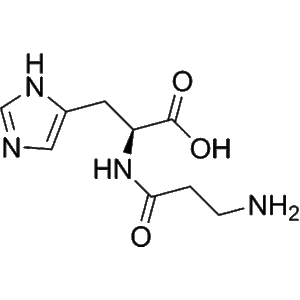
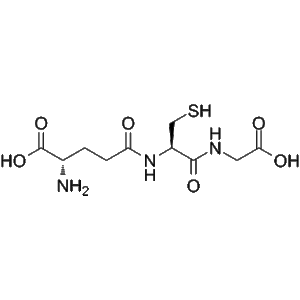
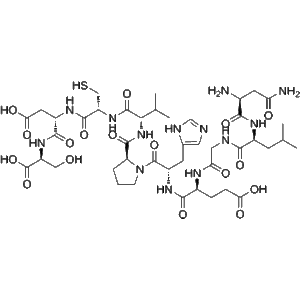
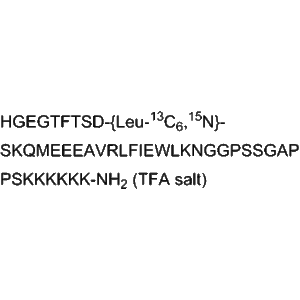
Reviews
There are no reviews yet.